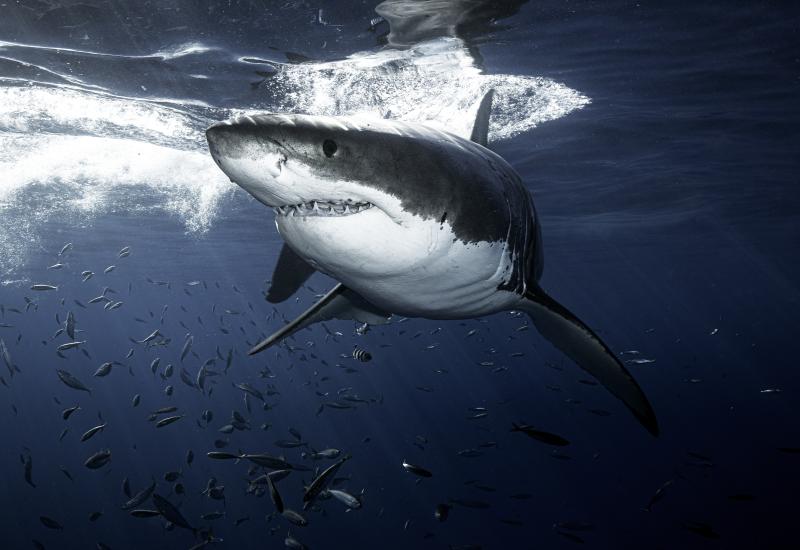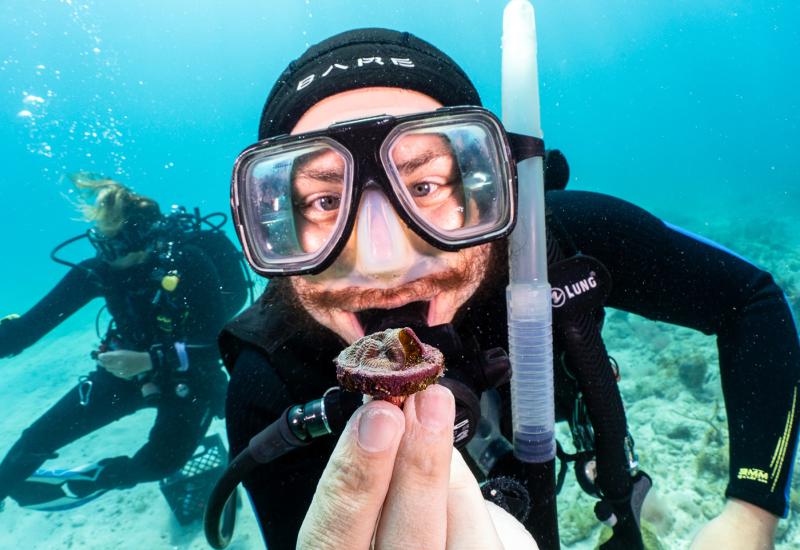WATCH: Extremely Rare Giant Phantom Jelly Caught on Film
A giant phantom jellyfish (Stygiomedusa gigantea), a rare yet fascinating creature, was recently recorded by the Monterey Bay Aquarium Research Institute 3,200 feet below the surface offshore of California's Monterey Bay.
Researchers found and filmed the jelly when exploring with one of MBARI’s remotely operated vehicles, ROV Doc Ricketts.
The giant phantom jelly was first discovered in 1899, and the species has been observed in the wild only about 100 times in the over 120 years since. Despite logging thousands of dives to the “midnight zone” with its ROVs, this encounter was only the ninth time MBARI researchers have recorded the elusive sea creature on film.
As its name suggests, the giant phantom jelly is quite large, with four arms trailing 10 feet long and a bell that measures more than 3 feet in diameter. It’s thought to be one of the largest invertebrate predators in the deep sea.
This spooky jellyfish is found in every ocean basin except the Arctic Ocean and is primarily seen between the surface and the bottom of the bathypelagic zone, also known as the “midnight zone,” which encompasses about 3,000 to 13,000 feet below the surface. The midnight zone is called such because light cannot reach these depths.
Because its preferred habitat is so deep, little is known about the behavior of the giant phantom jelly.
“The challenges of accessing its deep-water habitat contribute to the relative scarcity of sightings for such a large and broadly distributed species,” the institute writes in a Facebook post.
Before being able to observe them with ROVs, scientists tried bringing giant phantom jellies closer to the surface using trawl nets — a common method for deep-dwelling species — but they would turn to “gelatinous goo” in the nets.
Scientists have determined that the giant phantom jelly uses its thick, non-stinging arms as mouths that grab and trap its own prey, including plankton and some small fish. On the other hand, fish have been observed swimming near the jelly on occasion, which indicates that it could offer smaller creatures protection from large predators.
“The wide-open waters of the midnight zone offer little shelter, so many creatures find refuge in the gelatinous animals that are abundant in this environment,” MBARI explains in a blog post on the species. “MBARI’s observations of Stygiomedusa gigantea have helped illuminate its ecological role in the ocean’s depths.”
MBARI’s remotely operated vehicles ROV Doc Ricketts and ROV Ventana have logged over 5,600 dives and recorded more than 22,600 hours of video footage. The ROVs have come across a number of rare ocean creatures this past year, including a whalefish and a barreleye fish. Both were recorded deep offshore of Monterey Bay.
In its 34 years of deep-sea ROV exploration, this was only the sixteenth time MBARI researchers encountered a whalefish and the ninth time a barreleye fish was captured on camera.









